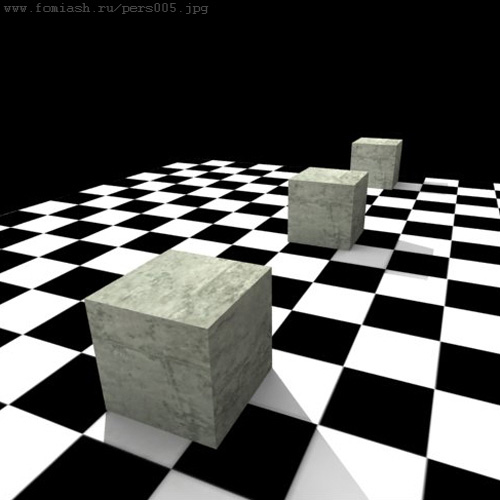Projection in painting.
System of perception.It had been given a full overview in a book” Projection systems in visual arts” by academy scientist B.V. Raushenbach. I will briefly describe it, although I don’t use projection modeling my self. There are plenty of food for thought there.
Beside the linear projection, described here, there also a axonometric method of modeling of an opposite projection. The author talks about it in 5-th chapter, called” Axonometry and opposite projection». He also gives definition for” Geometrical contradictions of system”.
First of all, the visible space is constructed not only by eye. The picture on the eye retina is accepted by the brain in a specific manner. ( see more in 6-th chapter -”visual illusions”)
Because of this drawback, the objects on the back of the painting must be smaller, then they would really be according to a distance. It doesn’t mean that this method is incorrect. Neither of methods of projection are ideal. So there is a problem for a painter: which of given methods to improve. Evidently it is better to improve the system of calculation for projection then to change the laws of sight of Homo sapiens.
I will take a drawing from the book and ask you to not to pay attention to different marks and signes. I’ll try explaining it with my own words. If you take a man and glue him to a ceiling in a library or a museum with columns, where the floor runs up to horizon, then this is how he would see it.

The line of his eyesight and the ceiling line will be on the same level (not taking to account the height of forehead), and, obviously, the upper edges of columns will be in the same plain. The matter is that if you make the column smaller according to a distance, it will be same size as one to the right, but won’t reach the ceiling. Well, you just have to stretch it and that’s it! But it’s not all that easy. There are few methods of “stretching”, deformation of objects in other words, in order to void the errors, but according to different angles of linear projection.
The author mentions about infinite amount of such methods. But we will take a look at a few, described in a book.
If the column would be that close in reality, then its upper part would be closer then its base in relation to viewer and that missing height (H) would be different, but still same as in renaissance projection. In the chapter ”projection systems in visual arts” such errors considered to be relative. Moreover, only one projection system must be chosen, so that a hand drawing would fit in the borders of the picture.
In other words, if you can follow renaissance projection system laws or to some other system by eye, then you be fine. If not, then you must buy special engineering programs that would calculate needed values for you, and you must study the book’s second part with formulas.
From left to the right there is a table of projection values (three vertical construction systems).
[*] – For specific object, unrelated to its location in space. [*] – reflects the rules of drawing before renaissance, where all objects were drawn proportionally separately, but not all together. If you see shaded facets among other views, that mean those facets egoistically depict the correct shape of an object to which it belongs and won’t change in relation to a view. [R] – for renaissance and further, following evolution.
Note, that only [R] has close and far view without shaded facets, but the object between them completely corresponds to its proportions. In other examples facets are equal [*](row[*] can not exist within general projection system, but shows a true shape of an object), somewhat like a fight between projection, dictated by composition, and correct view of separate object.


Such a complex approach may seem to be unnecessary difficult for a painter, who solves these problems easily without thinking. But, this material was written by academy scientist, and that presumes a serious study.
The rest of the material devoted to coupling of objects in space. For example, looking at the picture of room interior we can realize that this room takes in many views and then we can figure out how to draw a plinth in such case.
This material will also be useful for photographers. Moreover, author even thought of construction of devices for manual coupling of objects in cosmic space.
________________________________________________________

________________________________________________________

________________________________________________________

________________________________________________________

________________________________________________________

fomiash 09/2009
